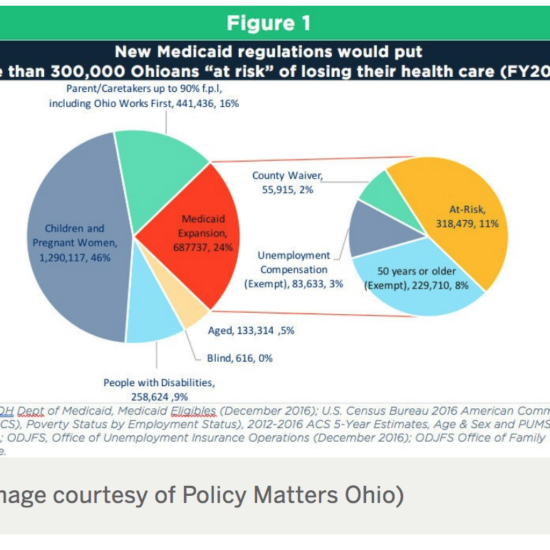
This blog post is written by Linda Young, MSN, RN, FRE, a post-graduate student enrolled in George Washington University’s Health Policy and Media Engagement Certificate program. Ms. Young has many years of experience in nursing regulation and acute care nursing practice. Follow her on Twitter @ljy770157106
After South Dakota removed regulatory barriers for nurse practitioners, anyone in Watertown experiencing a non-life threatening illness or injury can see a nurse practitioner at the local urgent care clinic for a reasonable fee, as low as $40, or use private insurance.
Two family nurse practitioners, Melissa Magstadt and Holly York, opened their own urgent Quick Care clinic in Watertown in May 2018. Their goal was to provide quality care quickly offering short wait times with low out-of-pocket costs. Patients can use their private insurance but many opt to pay a baseline, non-insurance charge of $40.
Affordable, accessible care is important to Magstadt who offers reasonable prices to patients who do not meet Medicaid eligibility guidelines. South Dakota is one of a handful of states that has not expanded Medicaid. This leaves many individuals unqualified for Medicaid, making slightly more income than federal poverty guidelines.
According to Magstadt, “We see a lot of the uninsured persons who make too much for Medicaid but don’t have insurance. Or, if insured, it hardly helps when the deductibles are $5000! We had a patient yesterday who said “can I make payments on my bill here?” And I said, “Well, how does a $40 clinic bill sound to you?” And he said, “40 bucks? I can pay that!”
Only urgent care services are provided at their clinic. They refer patients that need ongoing management of a health condition like diabetes to a primary-care provider; and refer or transfer patients with more serious medical conditions like a heart attack to the emergency room. Magstadt says the clinic is a good option for individuals who have an urgent, non-life threatening health problem like an ear infection, sore throat, or sprain. The clinic also offers $85 health examinations for commercial drivers, a huge savings.
Combinations of private insurance and flat fees allow patients to more easily afford care. Conservatively, Magstadt estimates her clinic saves patients $29,000 a month; “We have really started making an impact on the working poor; 90% of patients we have seen decided to pay cash because their deductibles are so high.”
Magstadt says the clinic is doing well financially, “our billing and coding company reminds us we can charge and bill more, and we are “leaving money on the table”, but Holly and I keep telling them, sure we could bill higher, but we don’t need to. We want to be a part of helping with the health care cost crisis.”
In their first month they saw 256 patients and they’re growing, “We have the Lake Area Tech Institute here. Half the students do not have insurance. They are returning to school as non-traditional students to develop a career. The tech school does not have student health so we have partnered with them to provide the $40 clinic visits. Love the excitement and energy of the young students.” In addition Magstadt signed contracts with a major shipping company, a construction company, and a local school district who decided to exclusively use the clinic for required physicals; securing a steady income for their clinic.
Impact of Removing Anticompetitive Barriers
In 2017 South Dakota’s legislature passed new laws in 36-9A authorizing full practice authority for certified nurse practitioners (CNP) and certified nurse midwives (CNM). Major changes included removing physician collaborative agreement requirements, placing the regulation of CNMs and CNPs under the sole jurisdiction of the Board of Nursing, and modernizing scope of practice language. Prior to practicing independently, CNMs and CNPs must practice a minimum of 1,040 hours under a collaborative agreement with an experienced physician, CNP, or CNM.
CNPs and CNMs practice includes conducting advanced assessments, ordering and interpreting diagnostic procedures, establishing primary and differential diagnoses, prescribing, ordering, administering, and furnishing therapeutic measures such as medications, durable medical equipment, or nutrition therapy. They are required to practice within their area of education, licensure, competence, and experience. As health professionals they are accountable to collaborate with other health care providers, refer or transfer patients appropriately.
Both Magstadt and York are family nurse practitioners with many years of experience in urgent care, emergency care, and other areas of medical care. In addition to the urgent care clinic, Magstadt also owns her own medical spa. Having served as a South Dakota state legislator, she is well aware of the impact the legislative process has on removing barriers to practice.
After the law changed, Magstadt and York seized the opportunity to use their skills and experience as qualified advanced practice registered nurses to open their clinic after recognizing a need for urgent care services at affordable prices. Watertown is one of South Dakota’s larger communities with a population of 21,540 (U.S. Census Bureau). Their clinic attracts patients from Watertown and nearby towns and farms. The two NPs see patients on a walk-in basis from 7:00 AM to 7:00 PM Monday through Friday, and on weekends and holidays.
Educating patients on differences between care delivery settings is important. Urgent care clinics are designed to provide for urgent health needs, like ear infections when the primary care clinic is unavailable, while primary-care providers’ manage patients’ health conditions, like diabetes or blood pressure, and provide routine health maintenance checkups. Emergency rooms are for life-threatening concerns like heart attacks. Magstadt and York promote and encourage patients to connect with a primary care provider.
Providing Value-Added, Patient-Centered Care
This clinic is one example of how quality, cost-effective health care can be delivered by CNPs once a state’s restrictive barriers to practice are removed, opening clinic doors and possibilities allowing nurse practitioners to provide health care services within their level of education and experience.
Affordable, accessible care is important for both rural and urban communities. Magstadt and York’s clinic demonstrates how nurse practitioners can make a powerful impact in a community to promote healthy outcomes.
It is time to make legislative changes in all states to reduce barriers and allow flexibility for nurse practitioners to positively impact healthcare for consumers in the U.S.
About the Author
Linda Young, MSN, RN, FRE is a post-graduate student enrolled in GWU’s Health Policy and Media Engagement Graduate Certificate program, she has many years of experience in nursing regulation and acute care nursing practice.







